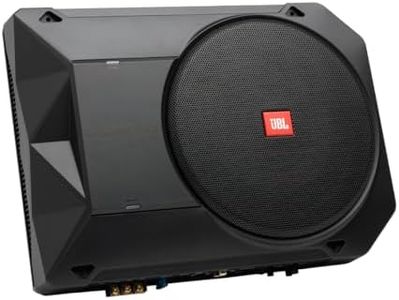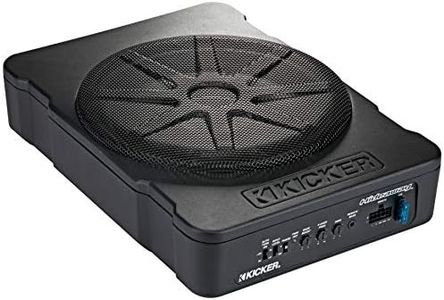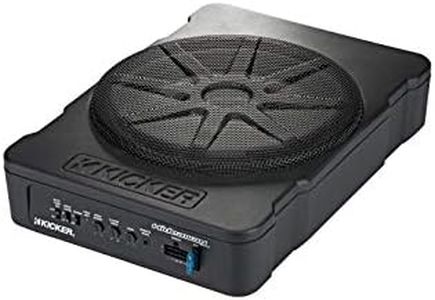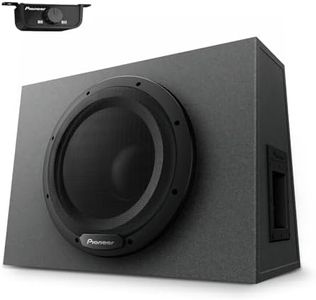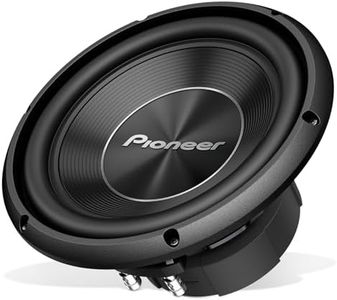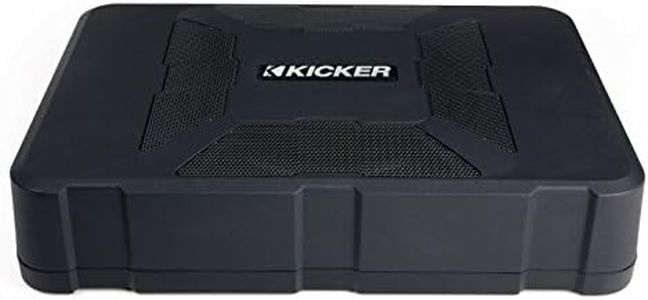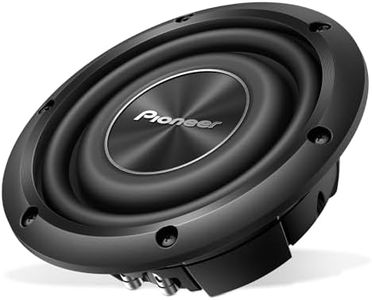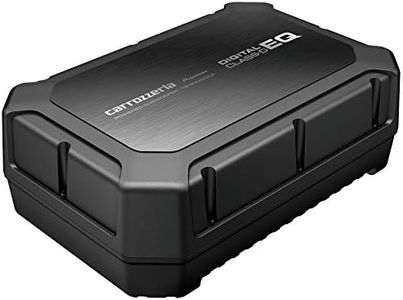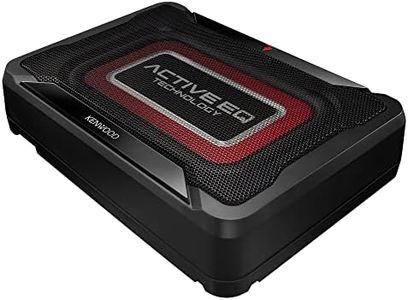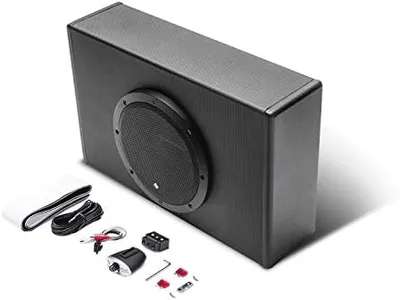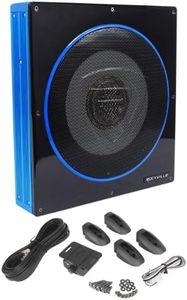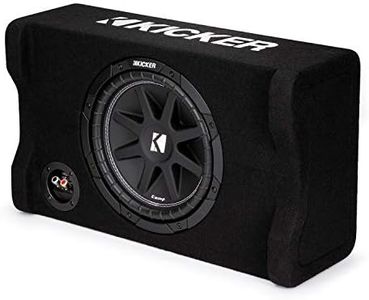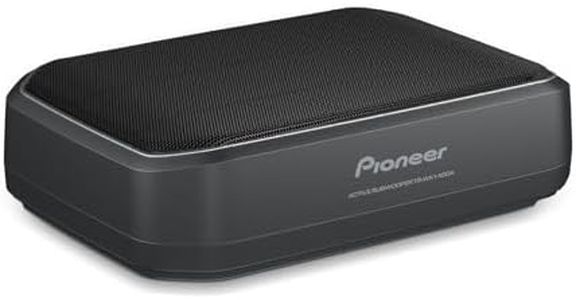We Use CookiesWe use cookies to enhance the security, performance,
functionality and for analytical and promotional activities. By continuing to browse this site you
are agreeing to our privacy policy
10 Best Car Subwoofers
From leading brands and best sellers available on the web.Buying Guide for the Best Car Subwoofers
Choosing the right car subwoofer can greatly enhance your music experience by improving bass response and allowing you to feel the low-end sounds that smaller speakers can’t reproduce. The key is to balance sound quality, fitting space, and your preferences for music style and volume. Understanding the main specifications will help you pick a subwoofer that not only fits in your car but also matches your listening habits and the type of music you love.Size (Diameter in Inches)Subwoofer size, usually measured in inches, affects both the amount and depth of bass you get. Smaller subwoofers (around 8-10 inches) are good for tight, accurate bass and fit well in smaller spaces. Medium sizes (10-12 inches) strike a balance between punch and depth, suitable for most listeners and genres. Larger sizes (13-15 inches and up) offer the deepest and loudest bass, ideal if you listen to bass-heavy music and want a full-body experience, but they need more space and power. Choose the size based on the type of music you enjoy, how much space you have, and how much low-end you want to feel.
Power Handling (Watts RMS)Power handling, usually described as RMS watts, shows how much continuous power a subwoofer can handle without being damaged. Low values (50–150 watts RMS) are suitable for casual listening and factory head units, while mid-range (200–500 watts RMS) works for most aftermarket systems and gives good performance. High values (500+ watts RMS) are best for loud, high-impact bass and require a compatible, powerful amplifier. Match the RMS rating to your amplifier and your need for volume and clarity, not just the largest number you see.
Sensitivity (dB)Sensitivity measures how efficiently a subwoofer converts power into sound and is rated in decibels (dB). Higher sensitivity (above 90 dB) means the subwoofer can get louder with less power, which is helpful if you have a modest amplifier or want to save on energy. Lower sensitivity (below 87 dB) often links to subwoofers designed for high power and massive bass. Pick higher sensitivity if you have a lower-powered system or need more output per watt; lower sensitivity is fine for bigger setups where you can supply more power.
Impedance (Ohms)Impedance describes the electrical resistance of the subwoofer and is commonly available in 2, 4, or sometimes 8 ohms. A lower number (such as 2 ohms) lets more current flow, often resulting in higher output, but it must match your amplifier’s capability. Many subwoofers offer dual voice coils, allowing wiring flexibility. Choose a subwoofer impedance that matches your amplifier’s minimum and optimum load to prevent damage and get the best sound.
Mounting Depth and Enclosure TypeMounting depth is how much space the subwoofer needs behind the mounting surface, and enclosure type refers to the box used—a sealed, ported, or bandpass design. Shallow-mount subwoofers fit in tight spaces, while standard subwoofers may need more room. Sealed enclosures deliver tight, precise bass and are more compact, while ported enclosures are larger and produce louder, boomier bass. Bandpass enclosures amplify a certain frequency range for extra loudness. Select a mounting depth and box type based on your available space and whether you prefer clean, defined bass or louder, booming bass.
Frequency ResponseFrequency response tells you how low and high the subwoofer can play, measured in Hz. Lower numbers on the bottom end (like 20–30 Hz) indicate deeper bass, while higher top-end numbers aren’t as critical for subs. If you want to feel the lowest notes in hip-hop, EDM, or classical, look for subwoofers with a lower frequency response. For lighter music styles or less emphasis on extreme bass, this spec is less critical.
